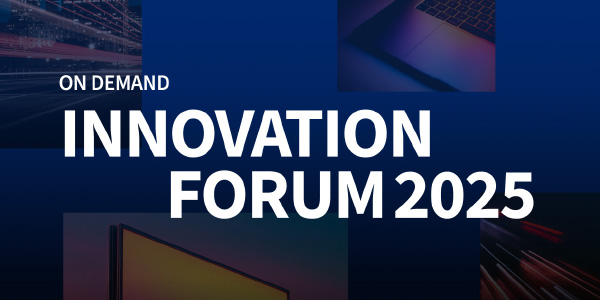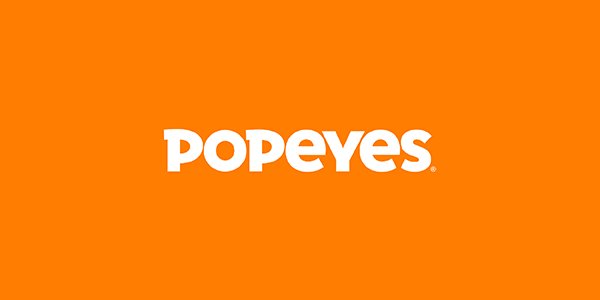Navigating the Future of Digital Marketing: Key Trends to Know in 2025 and Beyond

If one thing’s for certain in digital marketing, it’s that change is the only constant.
But these days, the digital marketing landscape is changing more rapidly than ever, with evolving consumer behaviours, technological advancements, and increased privacy regulations impacting everything from ad targeting to performance measurement.
At the same time, marketers are increasingly expected to do more with less. A Gartner study found that marketing budgets fell 15% in 2024, down from 9.1% of overall company revenue in 2023. In 2025, it’s only expected to worsen, with budgets continuing to shrink amid economic uncertainty and heightened pressure from the C-suite for even greater efficiency.
To succeed, marketers need to know what’s shaping the future of digital marketing and adapt their strategies to stay ahead.
In this article, we’ll dive into key areas transforming digital marketing, now and in the future, offering insights on how to balance short-term performance with long-term brand growth, unify fragmented marketing technologies, effectively activate 1st-party data, leverage AI for advanced personalization, and measure campaign success beyond traditional metrics.
Here are eight key trends shaping the future of digital marketing and what they mean for you and your marketing strategy moving forward.
The Lines Between Brand and Performance Marketing Will Continue to Blur
Bringing in high-quality leads and driving conversions are top priorities for any marketing team. But today’s marketers are under increasing pressure to show quick wins while building a strong brand for the long haul, and that’s easier said than done.
According to a recent report from Ascend2 commissioned by StackAdapt, 36% of agencies struggle to align brand and performance goals.
With tighter budgets, there’s a growing need to make every dollar work harder. But most teams can’t afford to wait months for results.
Marketers can no longer afford to choose between brand building and performance marketing. The future demands a balance—one that prioritizes both short-term ROI and long-term growth.
Increasingly, high-performing agencies no longer treat brand and performance as separate efforts that operate independently. They’re using technology to build connected strategies that align teams, data, and messaging across the funnel—leveraging customer data platforms (CDPs), dynamic creative optimization (DCO), and cross-channel attribution in tandem to deliver campaigns that are both measurable and meaningful across the entire customer journey.
To stay ahead, marketers should prioritize integrating their brand and performance efforts, focusing on executing strategies that drive short-term wins while supporting sustained growth.
The Future of Martech and Adtech Is Convergence
In 2011, when Scott Brinker, VP of Platform Ecosystem at HubSpot, published his first Marketing Technology Landscape Supergraphic, a visual representation of all the marketing technology solutions in the industry, only 150 existed.
Thirteen years later, 14,106 were included in his 2024 edition—marking a 27.8% increase from the year before. This not only represents 9,304% growth since its inception, but also highlights the increasing complexity—and fragmentation—of the entire martech ecosystem.
With 28.8% of US ad agencies saying they use six to seven adtech and martech tools as part of their tech stack, it’s clear that fragmentation has become a significant barrier to overall efficiency and effectiveness in the marketing industry.
Disconnected tools lead to inconsistent messaging, inefficient operations, and missed opportunities. Integrated platforms that bridge the gap between martech and adtech by seamlessly connecting paid and owned media channels under a single unified platform allow marketers to orchestrate campaigns more effectively, reducing costs, enhancing performance, and delivering consistent, personalized customer experiences at every touch point.
In the future, marketers who embrace integrated platforms to streamline their tech stacks will gain a clear competitive advantage, enabling them to react faster, spend smarter, and deliver more impactful results over the long term.
Full-Funnel Marketing Becomes a Strategic Imperative
Marketing teams are moving beyond disconnected tactics. Real results come when paid and owned media work together—connecting upper-funnel brand awareness with lower-funnel conversion strategies to engage audiences across the entire customer journey.
But alignment isn’t always easy. Many marketers still grapple with fragmented tools and siloed data, making it difficult to deliver cohesive messaging and measure campaign performance across every stage of the funnel.
Adopting a full-funnel approach not only helps break down barriers but maximizes marketing efficiency. By consolidating technologies and aligning strategies, teams can reduce duplicated efforts, streamline communication, and deliver more consistent and personalized customer experiences at scale.
Integrated platforms play a critical role here, allowing marketers to unify their tech stacks and build cohesive, multi-channel strategies that seamlessly move prospects from awareness to conversion. When campaign data flows freely between upper- and lower-funnel tactics, marketers gain clearer insights into what’s working and what’s not, helping them optimize campaigns faster and allocate budgets more effectively.
Going forward, marketers who embrace full-funnel alignment will find themselves better positioned to cut through the complexity, improve collaboration across teams, and drive stronger results over time, turning fragmented funnels into streamlined pathways to growth.
First-Party Data Will Define Marketing Success
You’ve probably heard this countless times before: As 3rd-party cookies slowly disappear and privacy laws tighten, 1st-party data has become the most valuable asset in any marketer’s arsenal.
According to EMARKETER, 1st-party data—alongside contextual targeting—is one of the top strategies US advertisers plan to use moving forward to maintain targeting effectiveness, with brands that build direct consumer relationships and strong identity frameworks best positioned for long-term success. Those who don’t risk being left behind.
A 2024 study commissioned by Deloitte and the American Marketing Association found that 32.6% of CMOs were increasingly investing in CDPs that offered better information about the customer journey, 29.1% were forming strategic partnerships with agencies and partners to centralize data around customer touch points, and 29.1% planned to reduce internal data silos to strengthen their 1st-party data strategy.
To stay competitive, marketers must proactively shift their focus from relying on 3rd-party cookies and invest in technologies and partnerships that help them activate 1st-party data effectively across every channel and touch point to build resilient, privacy-friendly relationships with their customers at scale.
AI and Personalization Will Drive the Future of Customer Experiences
AI is a practical tool reshaping how marketers plan, execute, and optimize campaigns.
Still, while Ascend2’s survey found that 82% of agencies have either significantly or moderately integrated AI into their workflows, 18% said they had little or no AI adoption at all.
The potential for AI in digital marketing is high, and not just for automating routine tasks and improving efficiencies.
From audience targeting and DCO to campaign recommendations via AI-powered assistants, AI will continue to define the next era of digital marketing beyond surface-level generative AI applications, allowing marketers to deliver truly personalized and predictive customer journeys at scale.
With 81.3% of agency professionals saying that AI will be the biggest trend to shape the next decade of digital advertising, it’s clear that the question is no longer about whether you should use AI but how you can use it to drive deeper insights, build stronger relationships, and enhance overall campaign performance.
Advanced Data Attribution and Measurement Will Set Marketers Apart
Marketers need to prove ROI more than ever. But success today and in the future will be measured beyond immediate clicks or conversions.
According to the Ascend2 survey, while most agencies track common brand KPIs like social media engagement (58%) and website traffic (50%), the highest performers go further—shifting away from surface-level metrics toward indicators of sustainable growth, such as SQLs (56%) and customer lifetime value (54%).
Additionally, the IAB reports that 64% of US ad buyers expect to focus somewhat or significantly more on cross-platform measurement in 2025 to gain deeper insights into customer journeys and marketing effectiveness across channels.
Cross-channel attribution, incremental lift analysis, and engagement lift studies can help measure campaign impact beyond clicks, providing actionable insights for reinvestment and optimization.
Looking ahead, marketers who prioritize advanced attribution and measurement will be better equipped to justify budgets, enhance campaign performance, and drive long-term business growth amid ongoing economic uncertainty.
CTV and DOOH Are Becoming Performance Marketing Channels
Connected TV (CTV) and digital out-of-home (DOOH) advertising have traditionally been seen as awareness plays. However, technological innovations like shoppable ads, dynamic creatives, and enhanced measurement capabilities are increasingly transforming them into bona fide performance marketing channels.
According to EMARKETER, more sophisticated approaches to attribution, such as multitouch attribution and advanced measurement methods like incrementality testing and media mix modelling, are helping advertisers demonstrate the value of CTV investment relative to other channels, unlocking greater budget allocation.
Meanwhile, DOOH is becoming increasingly measurable and proving itself to be a powerful performance channel, with research finding that 76% of consumers take an action after seeing an OOH ad and 73% favour DOOH formats compared to traditional static OOH ads.
As a result, EMARKETER predicts that more ad dollars will be directed to CTV than linear TV by 2027, and programmatic DOOH ad spend is expected to grow 23.7% in 2025 and reach $1.23 billion by 2026.
Brands utilizing CTV and DOOH strategically can achieve significant performance gains, capturing valuable leads and driving measurable results alongside traditional brand-building benefits.
Email Is the New Performance Marketing Powerhouse
Despite its longstanding presence in marketers’ toolkits, email continues to be a high-performing channel in today’s digital landscape.
Part of that has to do with its sheer scale and reach. According to Statista, there are over 4.37 billion email users globally, with nearly 10 billion emails being sent per day in the US alone. But it also remains highly effective, with 69% of consumers worldwide citing email as their preferred communication channel with brands, and a study finding that 52% of marketing professionals saw double the ROI from their email marketing campaigns in 2023 compared to the year prior.
Email and programmatic no longer need to operate in separate silos. Platforms like StackAdapt support cross-channel orchestration so marketers can manage and optimize both email campaigns and programmatic media buys within a single workflow, triggering the right message at the right moment, whether it’s in the inbox or on the open web.
Prepare Today for the Future of Digital Marketing
In an environment where constant change is the only certainty, staying ahead requires marketers to proactively embrace new tools, strategies, and mindsets.
The convergence of martech and adtech, the blending of brand and performance marketing, and the shift toward unified, privacy-friendly approaches driven by 1st-party data are essential to achieving long-term success.
Marketers who successfully integrate their technology stacks, align their brand and performance goals, and tap into email’s unparalleled potential for connection and conversion will position themselves to thrive amidst tomorrow’s uncertainties.
The time to adapt and evolve is now.
Want to see how these trends are playing out in practice and gain actionable insights for your digital marketing strategy? Download Cracking the Code of Conversions: How Marketers Win the Battle for Attention.









